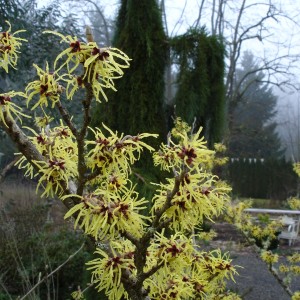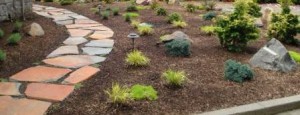
Capricious as March may be in her whims of weather, taking on a few of these spring garden tasks – even if between showers – will spruce up your landscape and lay the groundwork for a great growing season.
A clean sweep of decluttering, purging and tidying now will reward you with a fresh palette and greater options going forward.
Remove dead, damaged branches
Tree and shrub branches that have been damaged by cold, snow and wind should be pruned back to live stems; use a handsaw for any larger than ½ inch in diameter.
Prune (some) shrubs
While it’s a good time to prune summer-flowering shrubs, such as Rose of Sharon, before buds swell, the ideal time to prune spring bloomers is right after they flower. However, you can also prune them while in flower and use the flowering stalks in arrangements for inside. Forsythia and lilacs are wonderful examples.
Prune roses
Cut back winter-damaged rose canes to 1 inch below the blackened area. On climbers, keep younger green canes and remove older woody ones; neaten them up by bending the canes horizontally and tipping buds downward. Use jute twine or gentle Velcro fasteners to hold the canes in place. This task is best accomplished with a pair of sharp bypass pruners – and good gloves!
Divide perennials
Prune flowering perennials to a height of 4-5 inches to allow new growth to shoot up. Where soil has thawed, dig up overgrown clumps of perennials, such as daylily and hosta, dividing them into smaller clumps to be shared or transplanted elsewhere.
Clear the decks
Rake fallen leaves and dead foliage from around the base of your plants; they can smother plants and foster disease. Pull up weeds and spent annuals and rake away existing mulch to make way for a new layer after spring planting. Use pins to fasten loose drip irrigation lines and a square-head shovel to give beds a clean edge and keep turf grass from growing into them.
Feed
Now is a good time to spread a pelletized fertilizer on the soil’s surface so that spring rains can carry it to the roots. Add 5-10-10 fertilizer around bulbs as soon as they flower to maximize bloom time and nourish next year’s growth.
Compost yard waste
A compost pile can be as simple as a small corral made by joining a section of wire fencing. Collected leaves, cuttings, spent foliage and other debris will decompose and create nutrient rich humus for amending your garden. Branches larger than 1/2 inch in diameter should be cut down or chipped to accelerate decomposition or add a bagged compost starter to the pile. Keep the pile as moist as a wrung-out sponge and aerate it with a pitchfork every two weeks. Early spring weeds may keep growing and go to seed. These and chemically treated plant material should be otherwise disposed of.
Prep lawn for spring seeding
Test your soil’s pH in various locations where your lawn will be and assemble the right amendments. Remove damaged, diseased turf to prepare for the seeding that should follow in a few weeks. You can remove dead turf with a square metal rake, then flip it over to spread compost. Work in a half-inch layer of compost to keep the new seed moist and increase the germination rate. Begin seeding once the forsythia starts blooming in your area.
 Clean up paths & patios
Clean up paths & patios
Rake escaped gravel back into aggregate walkways and patios and order more to spread in large depressions that often form near the driveway’s apron. Refill joints between flagstones by sweeping in new sand or stone dust; water with a hose to set it, then repeat. If the freeze-thaw cycle has heaved pavers out of place, remove them and replenish the base material as needed before setting pavers back in. Use a pressure washer with a low pressure tip to remove slippery algae spots or leaf stains from patios and walkways.
Restore worn wood fences
Remove badly rotted or damaged pickets, boards or lattice and scrub wood structures with a mixture of 2 gallons water, 2 quarts bleach and 1 cup liquid soap; let dry. Patch rotted sections with wood epoxy; install new wood as needed. Check wobbly fence posts to see if they need replacing. Scrape off old paint, then sand with 60 grit sandpaper to prep for a new finish coat. Once temperatures go above 50 degrees F, brush on a new coat of paint or stain.
Choose Frontier Landscaping for help with your spring landscape cleanup. We are based in Vancouver, Wash., and provide services in the Portland-Vancouver area and throughout Clark County, Washington.
Call today to find out how Frontier Landscaping can grant you the yard you’ve been wishing for.

